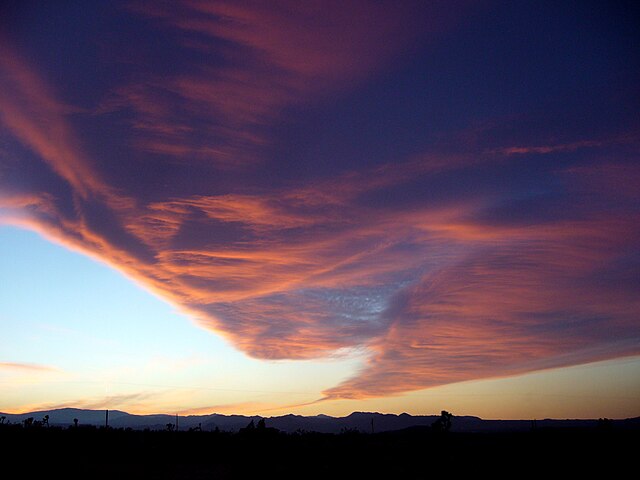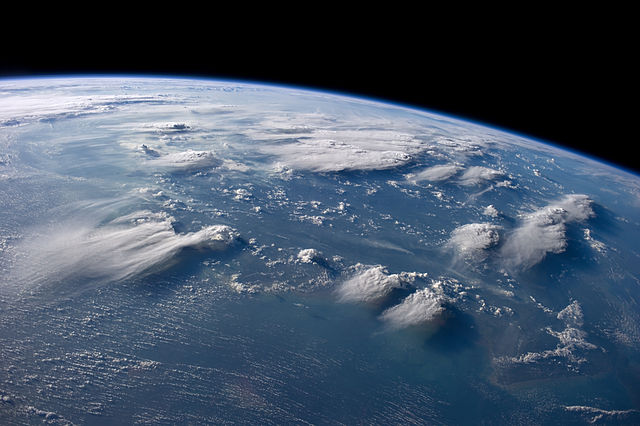Orographic lift occurs when an air mass is forced from a low elevation to a higher elevation as it moves over rising terrain. As the air mass gains altitude it quickly cools down adiabatically, which can raise the relative humidity to 100% and create clouds and, under the right conditions, precipitation.
A gravity wave cloud pattern—analogous to a ship wake—in the downwind zone behind the Île Amsterdam, seen from above over the far southern Indian Ocean. The island generates wave motion in the wind passing over it, creating regularly spaced orographic clouds. The wave crests raise and cool the air to form clouds, while the troughs remain too low for cloud formation. Note that while the wave motion is generated by orographic lift, it is not required. In other words, one cloud often forms at the peak. See
Precipitation induced by orographic lift in Andalusia.
Windy evening twilight enhanced by the Sun's angle, can visually mimic a tornado resulting from orographic lift
A view of the Front Range of the Rockies capped by a föhn wall.
In meteorology, a cloud is an aerosol consisting of a visible mass of miniature liquid droplets, frozen crystals, or other particles suspended in the atmosphere of a planetary body or similar space. Water or various other chemicals may compose the droplets and crystals. On Earth, clouds are formed as a result of saturation of the air when it is cooled to its dew point, or when it gains sufficient moisture from an adjacent source to raise the dew point to the ambient temperature.
Cloudscape over Borneo, taken by the International Space Station
Windy evening twilight enhanced by the Sun's angle, can visually mimic a tornado resulting from orographic lift
Cirrus fibratus clouds in March
High cirrus upper-left merging into cirrostratus right and some cirrocumulus far right







